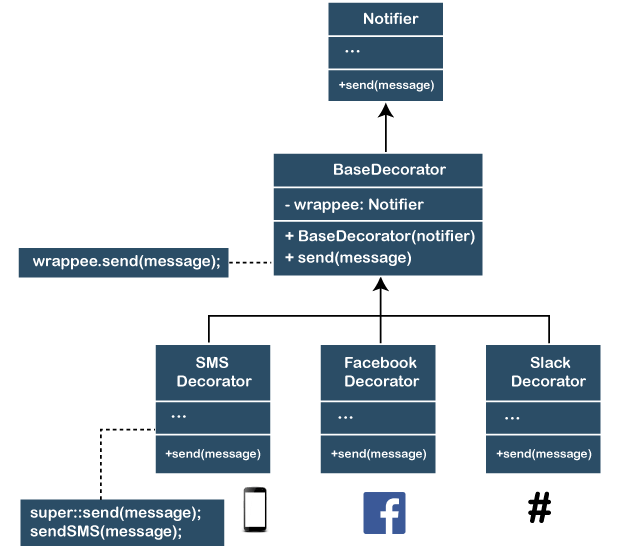Observer Design PatternAn observer design pattern is a behavioral design pattern where objects are represented as observers that wait for an event to trigger. When the new event is triggered, the multiple observers catch these events. The event source (or object) attaches to the subject. Whenever the change is performed in the subject, it is notified by the observer. It follows the one to many approaches between the objects so that one change in the subject will reflect in all of its dependents and be updated automatically. Let's understand the above concept using the real-world example. If we are newspaper or magazine subscriber, we don't need to go the store to get the news. We get the newspaper at home. If there is a new update available, the publisher sends it directly to our mailbox right after publication. The publisher has the complete information regarding the subscriber. The subscriber can stop the publisher's service if it doesn't match with their interest. Problem without using Observer Design PatternImagine a customer is interested in a particular product (suppose a new mobile) that is not launched yet. But, it will be available in the store very soon so that customers could visit the store regularly and check the availability. But these visits would pointless because the product is still on the way. Instead of doing this, the store could send several emails, but it will bother those who are not interested in the new product. Here, the two problems arise: Either the customer wastes their time checking product availability, or the emails could bother by notifying the wrong customer. Solution Using Observe MethodThe objects that contain some interesting information are represented as the subject. It notifies the other objects to change to its state is known as the publisher. All the other objects that want to track changes to the publisher's state are called subscribers. In the observer method, the publisher class consists of the subscription method so that each object can subscribe and unsubscribe to the event that is occurring by that publisher. This mechanism may seem slightly hard, but it is not as complicated as it sounds. The publisher-subscriber mechanism consists of the following methods.
With the observer method's help, whenever any event takes place to the publisher, it directly transfers to the subscriber and calls the exact notification methods on their objects. An application might have several subscriber classes willing to track the events from the same publisher class. But publishers cannot attach to all of these subscriber classes. A common interface is implemented by all subscribers and publishers to use that interface to communicate with subscribers. The interface should declare the notification method, and this method contains the set of the parameter that the publisher can use to pass some data along with the notification. We can modify the interface to make compatible for the all subscriber to work with the different types of publishers. We only need to specify a few subscribe methods. 
Implementation of Observer Design PatternLet's understand the following code of snippet. Example - Output: Current Task Downloading Working_Class running: 1 (1) Working_Class running: 1 (1) Working_Class running: 1 (1) Task CompletedTask CompletedTask Completed Working_Class running: 2 (5) Working_Class running: 2 (5) Working_Class running: 2 (5) Task Completed Task Completed Working_Class running: 3 (5) Task Completed Working_Class running: 3 (5) Working_Class running: 3 (5) Task CompletedTask Completed Working_Class running: 4 (5)Working_Class running: 4 (5)Task Completed Working_Class running: 4 (5) Task CompletedTask Completed Working_Class running: 5 (5) Working_Class running: 5 (5) Task Completed Working_Class running: 5 (5) Task Completed Task Completed Task Completed Explanation - In the above code, we explained the way of downloading a result where each object is treated as the observer. Advantages of Observer Design PatternFollowing are some advantages of the observer design pattern.
Disadvantages of Observer Design PatternFollowing are some disadvantages of the observer design pattern.
Applicability
Next TopicPython Anti Design Patten
|
 For Videos Join Our Youtube Channel: Join Now
For Videos Join Our Youtube Channel: Join Now
Feedback
- Send your Feedback to [email protected]
Help Others, Please Share










